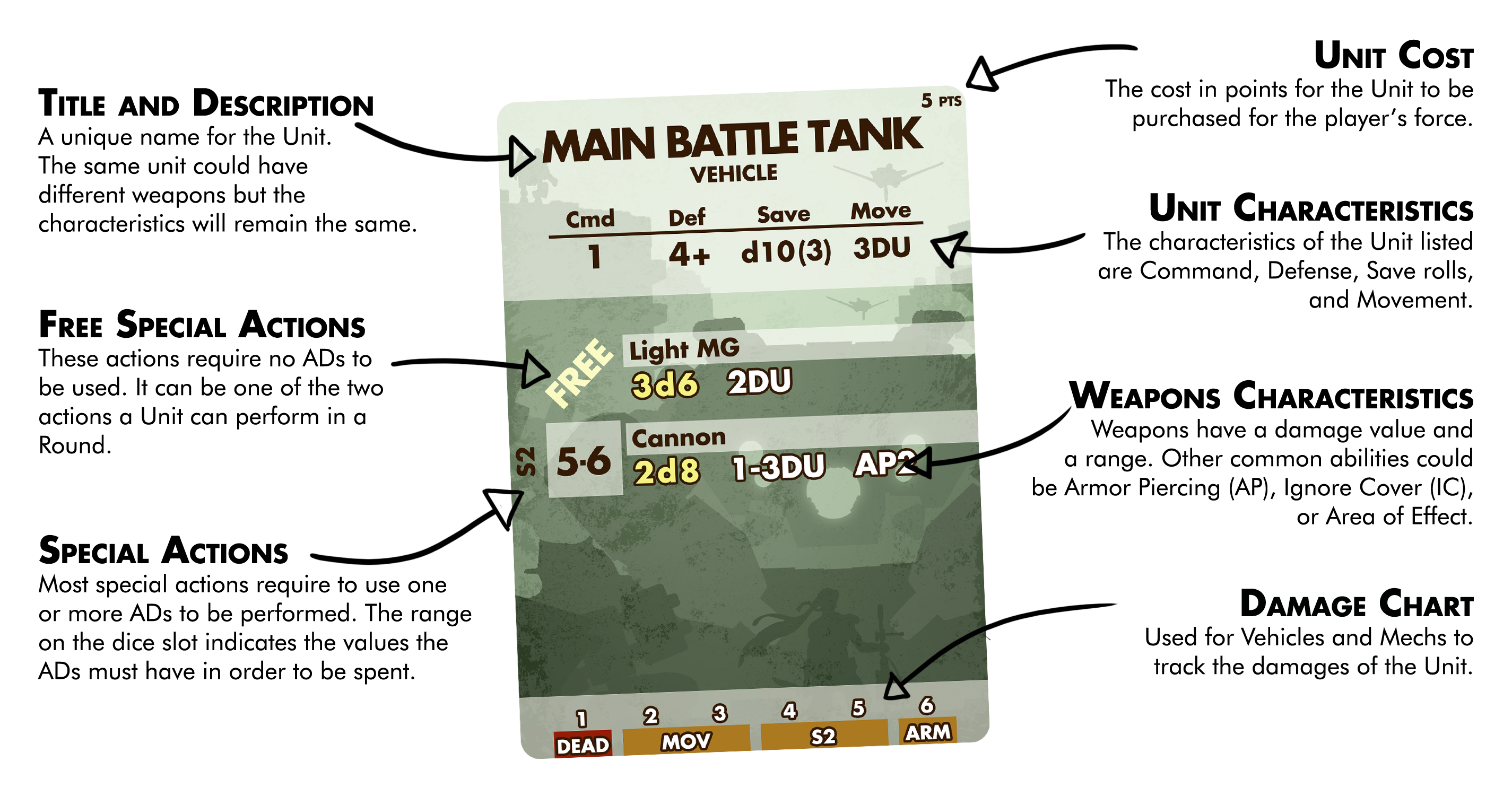Game Overview
Full Spectrum Dominance (FSD) is a miniature wargame for small-scale miniatures, which encompasses any scale from 3mm to 15mm and over.
Vehicles and mechs are handled individually, while infantry troops move in small teams, either as grouped figures or multi-based stands.
Game Size
Figures and terrain in FSD should roughly represent the real numbers and distances of the real battle. Therefore, most of the games are small skirmishes between two platoons (or small companies) in a tight area.
Distances in FSD are measured in Distance Units (DUs), which vary depending on the
scale of the miniatures used. A table is generally between 8 x 12 and 12 x 12 DUs. This corresponds to a 2×3 feet (or 60 x 90 cm) table for a 6mm scale game.
The models for the game are always counted in bases: the exact number of figures on each base is not particularly relevant. There is no mandatory size or shape of bases:
Use what you already have or what you like the most. It would be ideal to have a consistent base size among the armies playing during a game.
Activation Dice
Players use six-sided Activation Dice (ADs) to activate Units, perform Units’ special Actions, and to activate Support cards. ADs are at the heart of the game’s engine, and they set a limit on the maneuvers and tactics that players can put into action every Round.
ADs represent the limited choices players have each Round, and will be spent to activate Units. They are also necessary for most special Actions from Units and Support cards which have AD slots on them.
The value rolled on each AD matters: Whenever a slot on a card indicates a number or a numeric range (such as 4-6, 1-2, or 1) only ADs with such results can be used for it. We strongly recommend using specifically colored dice for ADs, so that you won’t accidentally roll them as regular D6s during combat. 10-12 mm sized dice would fit well on the cards.
Activation Dice
Players use six-sided Activation Dice (ADs) to activate Units, perform Units’ special Actions, and to activate Support cards. ADs are at the heart of the game’s engine, and they set a limit on the maneuvers and tactics that players can put into action every Round.
ADs represent the limited choices players have each Round, and will be spent to activate Units. They are also necessary for most special Actions from Units and Support cards which have AD slots on them.
The value rolled on each AD matters: Whenever a slot on a card indicates a number or a numeric range (such as 4-6, 1-2, or 1) only ADs with such results can be used for it. We strongly recommend using specifically colored dice for ADs, so that you won’t accidentally roll them as regular D6s during combat. 10-12 mm sized dice would fit well on the cards.
The Game Round
A Round is a game period where all players are able to use their available Units, Characters and Support cards to perform functions.
Rounds are made up of the six phases. During the Alternating Activations phase players alternates turns where each player may activate a Unit (or more than one
if the chosen Unit has a command value), play a Support card or deploy new Units from the reserve into play.
At the beginning of a new Round the ADs are rolled agan by all players, and new reinforcement waves might be added to the available forces of each player.
Objectives completion in scenarios is always checked at the end of each Round, and most scenarios last a maximum of six Rounds.

The Cards
Cards are used to represent Units, Support abilities, and Characters to be attached to Units. Each Unit card is used to track the stats of some miniatures in the game, while Support and Character cards do not have a miniature to represent them on the battlefield but are just as important for an effective warband.
During the game the cards are either on the table (representing “available” troops and
resources deployed or ready to be deployed) or assigned to a reinforcement wave, depending on how the chosen Scenario divides the total points of the army between the Rounds.
The Cards
Cards are used to represent Units, Support abilities, and Characters to be attached to Units. Each Unit card is used to track the stats of some miniatures in the game, while Support and Character cards do not have a miniature to represent them on the battlefield but are just as important for an effective warband.
During the game the cards are either on the table (representing “available” troops and
resources deployed or ready to be deployed) or assigned to a reinforcement wave, depending on how the chosen Scenario divides the total points of the army between the Rounds.
